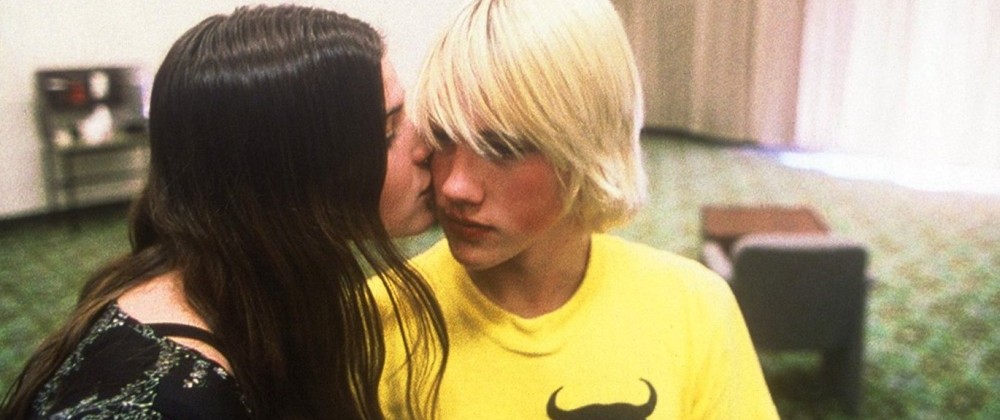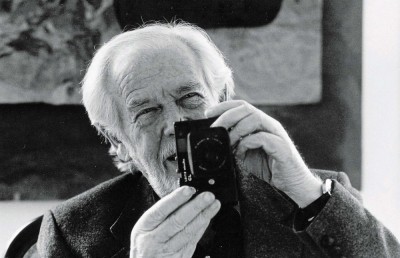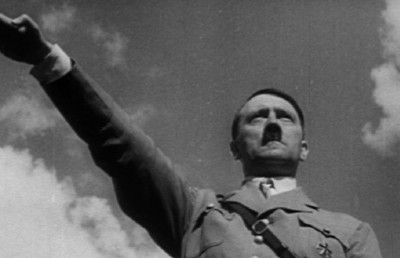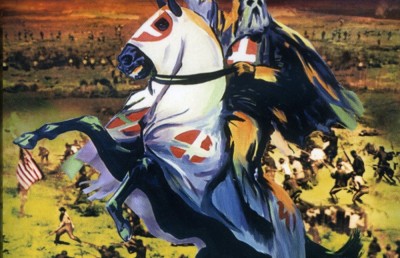World Cinema: 2003

Inspired by Senses of Cinema call for a “World Cinema Poll” I found it to be quite an interesting challenge to construct a list of the best films in the world from 2003. Following last year’s Cannes Film Festival, Mark Peranson declared that 2003 might be the worst year ever for films (and, for the Village Voice poll, he said that the best thing about the film year, is that it is over)!! If nothing else, it is now clear that we depend far too much on the Cannes competition to show us what is best in world cinema. Other international film festivals pick from the Cannes’ premieres, and some of the films even get distributed in major territories. I’m lucky to be living in Montreal, a city of many film festivals, and a place where small distributors often pick up foreign-language films. It is a given that the most commercial, French-language films are always distributed, usually before other territories outside Europe, but this year there have been slim pickings.
It would be easy for me to make-up a really strong list of ten films distributed in New York City in 2003, including both of Jia Zhangke’s films which were released in Montreal in 2002 by Seville Pictures, and Unknown Pleasures, Hou Hsiao-hsien’s Millennium Mambo, Nicholas Philibert’s documentary, Etre et Avoir, Elia Suleiman’s Divine Intervention (both of which were also Seville releases in the Province of Quebec in 2002), Abbas Kiarostami’s Ten, David Cronenberg’s Spider, Abderrahmane Sissako’s Waiting for Happiness, Gus Van Sant’s Gerry, and Diego Lehrman’s Tan de repente. If I were producing a list of 2003 Montreal releases I would have no hesitation in listing Russian Ark, and Morvern Callar, and I might add City of God, which like all the others, were shown for the first time, publicly, somewhere in the world before 2003. So, confining my selection to films which first screened theatrically, last year; here is my list (in no particular order):
Elephant
Following Jia Zhangke in 2002, there is no question in my mind that Gus Van Sant was the director of the year in 2003, with two films in release. Gerry surprised me as a brilliant landscape film, in almost-constant movement via Harris Savides’ camera, and marked Van Sant’s artistic comeback after a spell of overly commercial fare. Elephant was the one film in competition at Cannes that got almost universal praise, and, for good reason. With its brilliant narrative construction—where some scenes leading up to a high school massacre are seen at different times from three different perspectives—combined with Savides’ camera roving the hallways, Elephant’s subtle examination of Columbine provides no easy answers, but certainly asks questions of middle-class America.
Gaz Bar Blues (Luis Belanger)/Roger Toupin, épicier variété (Benoit Pilon)
Quebec as a region had, arguably, its very best film year in 2003.* No less than 20% of the province’s box office receipts have gone to locally produced films, far higher than in any previous year. In addition, some of these films have been critically successful, including Denys Arcand’s long-awaited sequel to Decline of the American Empire, which revisits his aging group of lecherous intellectuals, Les invasions barbares. I don’t share this enthusiasm, but I have been extremely impressed by two films which confront the changing face of Quebec, in particular, its economy, where small family businesses are collapsing under multi-nationalism. Gaz Bar Blues, takes the fictional route and shows a father and sons trying to maintain a gas station, against the odds. Comedy is injected through the antics of a group of out-of-work and retired men from the neighborhood who spend their days “hanging out,” while the emotion is provided through the rocky family relationships. Pilon’s video-film documents the declining fortunes of Roger Toupin’‘s variety store, located in the trendy Plateau district of Montreal, which used to be populated by working class people who frequented the store. Both films present low key, gentle portraits of their male subjects, and provide much needed antidotes to the testosterone-driven warmongering on view during the Oscar season.
Sarineui Chueok (Memories of Murder), Bong Joon-Ho
Whereas the province of Quebec had a good film year in 2003, the rest of (English) Canada, like most of the world, continued to be swamped by Hollywood. Not so the Republic of (South) Korea, whose continued building of a native film industry and film culture has shown us all that a theatrical quota system is the way to go. 2002 was hard to top commercially and critically, with five of the top ten films at the Korean box office being Korean made, including the top two, Marrying the Mafia and The Way Home, and with films like Oasis, Chihwaeson, Turning Gate, Camel(s), Too Young to Die and Sympathy for Mr Vengeance scoring critically. For some reason, North American distributors are extremely reluctant to pick up Korean films, although the greedy Miramax continues to buy North American rights to Asian films, only to keep them on the shelves, perhaps with a view to remakes. Certainly, this is the route they are taking with popular Korean films. It seems to me that Korea is now turning out films of real quality, and serious intent, which are also very popular with local audiences, in a way, similar to the alternative Hollywood of the early to mid-1970s, e.g., Coppola, Altman, Scorsese, Malick, something that has long been forgotten in Southern California. Typical of this tendency is the 2000 blockbuster political thriller, J.S.A., and last year’s money winner, Memories of Murder, which manages to dangerously mix comedy into a story of serial rape and murder. Interestingly, Memories focuses on the corrupt proceedings of the police force, who never find the killer. I can just imagine an American audience booing at the end and telling their friends not to see a film which leaves the viewer suspended in mid-air, asking questions…
PTU, Johnnie To
2003 has been a very sad year for the world of Hong Kong entertainment, with the loss of two of the region’s brightest stars, “Gor Gor” (Leslie Cheung) and “Sister (Anita) Mui.” But, the film industry is hanging in there, and with the ongoing commercial success of the Infernal Affairs trilogy—the first part of which just won many of the Golden Horse awards—and just about everything produced by the Milky Way company, it is pleasing to report that PTU may well be Johnnie To’s most experimental genre outing yet. Included in the New York Festival, no less, it impressed me greatly with its moody, predominantly blue, night-time settings rendered impressively in cinemascope, just seeing it on DVD. No-one seems to be releasing Hong Kong films in Canada any more—the Pang Brothers’ Eye being the only recent exception—so I’ll just have to wait and hope that Montreal’s Fantasia festival shows it this summer on their big screen at Concordia University.
Nafas-e Amigh (Deep Breath), Parviz Shahbazi
Iran is the other country, apart from Korea, which is still experiencing cinemania. Of course, the situation here is different: in Iran, with so few outlets for people living under such socially-repressive laws, cinema not only exists, but thrives. In recent years, some films challenging restrictions on race and gender have appeared, and Parviz Shahbazi has surprisingly been able to make three feature films dealing with youthful rebellion and criminality. His latest, Deep Breath, is his most ambitious, using a flash-back structure to create suspense, and ultimately to mislead the viewer into thinking that the protagonists will die at the end of their punkish flight from polite society. One of the two principal young male characters does, in fact, die from a mysterious illness, but his buddy may or may not “escape” with his girlfriend on the road to somewhere; we can’t be sure.
Baboussia (Granny), Lidia Bobrova/S Liuboviu, Lilia (With Love, Lilly), Larisa Sadilova
2003 was a very good year for women filmmakers. Sofia Coppola has become the first American woman to be nominated for a Directing Oscar (and only the third woman, period, the other two being Lina Wertmüller in 1976 and Jane Campion in 1993), for her gentle second feature, Lost in Translation (which I find to be vastly overrated, and potentially racist). Catherine Hardwick’s first feature, thirteen is very impressive, and Patty Jenkin’s first feature, Monster, has earned Charlize Theron, as serial killer Aileen Wuornos, an Oscar nomination for Best Actress. (She will almost certainly win.) But, I was more impressed last year by the work of two Russian female directors, Lidia Bobrova and Larisa Sadilova. Bobrova’s Baboussia, which treats the problem of the young neglecting to take care of the aged, was the most gut-wrenchingly affective film I saw all last year. It was shown at Montreal’s World Film festival, and, apparently it has been picked up for distribution here by K-Films Amérique. With Love, Lilly is a bitter-sweet tale of a provincial Russian woman, who is relentlessly optimistic about finding a husband. The film needs the relatively happy ending that it delivers, because along the way, from Lilly working in a chicken processing factory-on, her life and luck are grim.
15, Royston Tan/American Splendor, Shari Springer Berman and Robert Pulcini
2003 was a terrific year for documentaries (see the second entry, above), and it also gave us two films which continue a trend of blurring the distinctions between documentary and fiction, live action and animation. The digital realm makes the mixing of medias easier, and Royston Tan takes advantage of this with his first feature, 15. Amazingly, for a work emerging from a country, Singapore, with laws so strict that one can be arrested for spitting on the street, 15 depicts the drug-taking, masturbating, free-wheeling lives of five young punks (playing themselves) with complete candor. I found the scene where two of the 15 year-olds swallow condoms filled with heroin, before smuggling the drugs across the Malaysian border, real or not, to be just about the most difficult scene to watch all year. Berman, another first time, female director, and Pulcini have fashioned one of the most original American films for a long time, American Splendor. Having the real Harvey Peckar, ordinary American hero, interacting with the actor playing him, Paul Giamatti, in the same shots, was a stroke of genius. Finally the Sundance Film Festival delivered a film worthy of the tag “American Independent” after years of showcasing calling card films by “independents” whose primary goal is to make it in Hollywood.
Les tripelettes de Belleville, Sylvain Chomet/Dans ma peau, Marina de Van/Twentynine Palms, Bruno Dumont
For my eight choice, I propose an even stranger collection of films linked only by the fact that their directors are from France. All through the 1980s and through most of the 90s I was continually disappointed at the French films on offer. Only Claire Denis and Olivier Assayas seemed to me to be new directors of real worth and originality. But now, French cinema is well and truly back, with a vengeance. The animated feature, Les tripelettes de Belleville, a co-production of France, Belgium and Canada (and with a strong Latvian component) is the most purely entertaining film I’ve seen in a while. Inspired by Jacques Tati, and containing a sequence from his Jour de fête, it follows the fortunes of an old Portuguese woman and her Tour de France, cycling grandson (who is kidnapped), from Marsaille, France to Belleville, which is like a multilingual New Yok City. There they meet up with the aging singing triplets, who now play percussion. Almost a silent film—one can easily understand the original version without sub-titles—Les tripelettes is quirkily drawn and animated in near-continuous movement. Dans ma peau is similar only in its surrealism and dark comedy. Actress de Van’s first film as a director was one of the highlights of Montreal’s Fantasia Festival. Masochism seems to be a trait of many films directed by women, and Dans ma peau takes the idea of a woman doing damage to her own body to an extreme. Equally unpleasant to witness is the under-appreciated Twentynine Palms which revisits the Western U.S. desert territory of Antonioni’s Zabriskie Point, a film which director Dumont claims never to have seen. Built from interestingly composed long takes and wound like a spring, Twentynine Palms is never “boring” and delivers a criticism of contemporary America and its machismo with two shocking events near the end. But, on the whole it is surprisingly coherent: a Hummer, which is, in essence, a military vehicle, has been stalking the central couple like a dangerous animal for quite some time.
Panj-e Asr (At Five in the Afternoon), Samira Makhmalbaf/Joy of Madness, Hana Makhmalbaf
Samira Makhmalbaf’s Cannes’ winning film has already been released in Montreal, and it was interesting to see such a quiet film in a multiplex, hearing loud noises emanating from other theatres, occasionally. At times like these we realize how much our eardrums are being regularly assaulted by Hollywood soundtracks. As with her other films (and most products of Makhmalbaf’s Film House), At Five in the Afternoon is often beautiful to look at, but is also very sad in showing us the ruins of Kabul, Afghanistan, which had suffered the reign of the Taliban and the war against them. But Joy of Madness, Samira’s 14 year-old sister, Hana’s video documentary on the making of this film, is extraordinary in revealing how world cinema’s most successful filmmaking family works. As impressed as we are by their obsession to tell the truth about the perils of being a woman in Afghanistan, it is really shocking to see how Samira, goaded on by her father, Mohsen, coerces people to act in At Five in the Afternoon. For example, they persistently request that a poor, mentally-challenged father allow his really sick child to be in the film. Their desire for “realism” is salutary, but, why can’t they employ a healthy child and use make-up to suggest sickness? Few “making-of” documentaries are as truthful (and unconsciously) self-critical as Joy of Madness. The two works combine for a fascinating, riveting double-bill.
Bakushu (Early Summer), Ozu Yasujiro, 1951/Da Zui Xia (Come Drink With Me), King Hu, 1966
In a weak year, I found it necessary to consider film history in my tenth selection. Indeed, looking back, I think that the two most significant “world cinema” events in 2003 were “Heroic Grace: The Chinese Martial Arts Film,” curated by Cheng-Sim Lim at the UCLA Film Archive, including a travelling series of Shaw Brothers (Celestial Pictures) restorations and the complete retrospectives of Ozu’s surviving films, beginning in Berlin in February and continuing in Tokyo, Hong Kong, New York and Taipei, as a celebration of his 100th birthday (and to mark his death at the age of 60 on the same day!). December 12th indeed stands as a landmark date, and, appalled that no cinema in Montreal, not even the normally astute Cinémathèque Québécois, was showing any Ozu films I mounted a mini-retrospective at Concordia University. We showed 4 films (on video, unfortunately) to an appreciative audience of around 40 people, including Bakushu, which, more and more seems to me (and my dear friend Rüdiger) to be the definitive Ozu film, with a great deal of comedy mixed together with his trademark sadness emerging from great performances which are seen in exquisite black and white shot compositions. We still have a lot to learn from this great film director. And, as much as I can appreciate, even admire the excesses of Quentin Tarantino’s Kill Bill, Vol. 1 and Takashi Miike’s Ichi the Killer, I find that both directors fail to appreciate what was best about the films to which they pay hommage. To see the film which can be understood as being the first of the modern Hong Kong martial arts films, Come Drink with Me, fully restored in color and cinemscope is a real treat. What I have always loved about King Hu’s work is the graceful Chinese Opera-inspired movement of his action sequences, not their violence, per se. I recommend that everyone gets themselves a multi-region, multi-system DVD player and rents or buys some of the Shaw Bros./Celestial discs like Come Drink with Me, Chu Yuan’s Intimate Confessions of a Chinese Courtesan (1972), Zhang Che’s Vengeance! (1970) and Lau Kar-leung’s The 36th Chamber of Shaolin (1978). As for the Yakuza film, a good place to start would be Kinji Fukasaku’s Street Mobster (1972) and Battles Without Honour and Humanity (1973) which are available from Eureka Video in England.
*Depending how well Lord of the Rings does at the Oscars—it is already a huge success at the box office—New Zealand might, retrospectively, have also had its best ever film year, especially considering the critical success of Viki Caro’s Whale Rider in North America.














